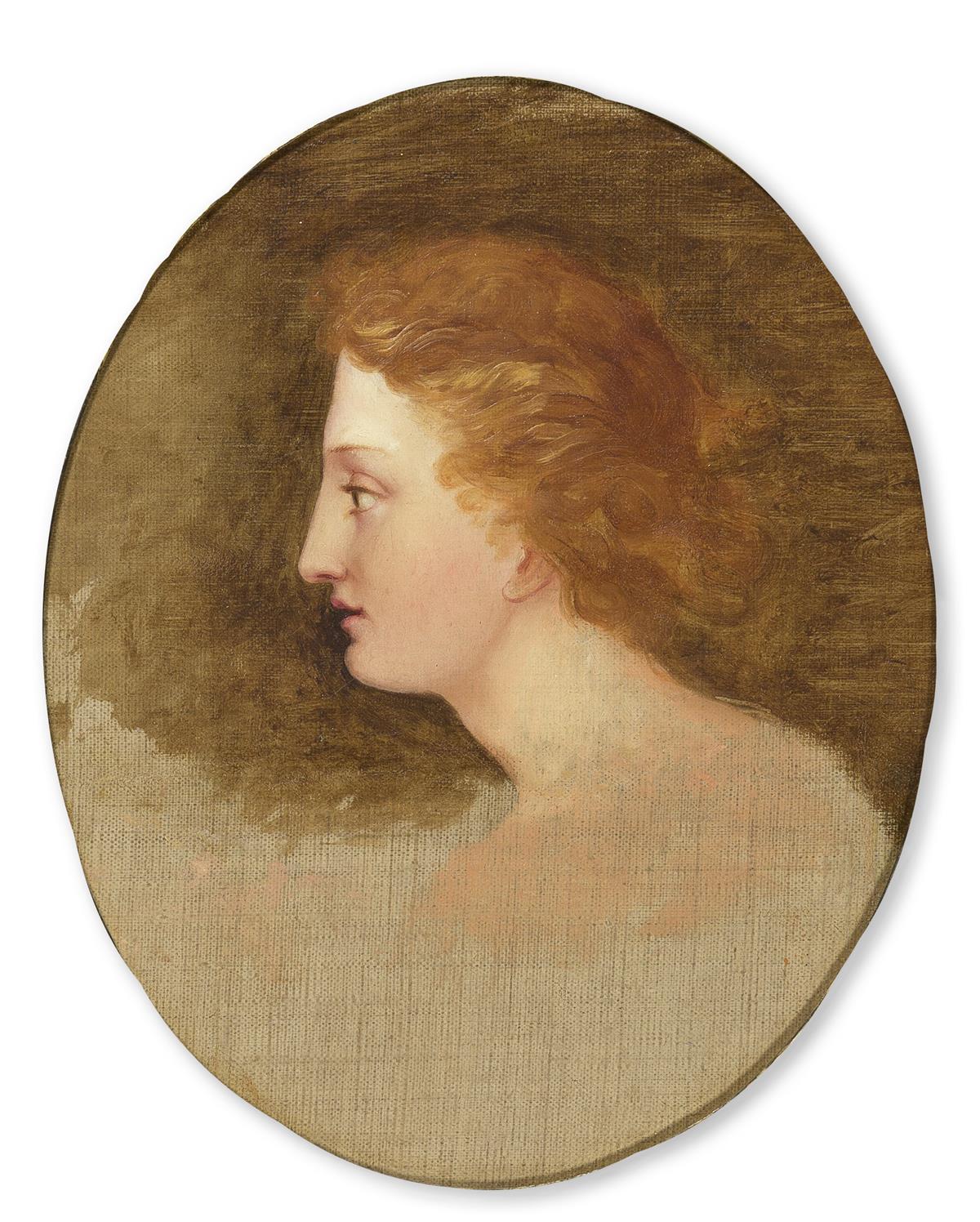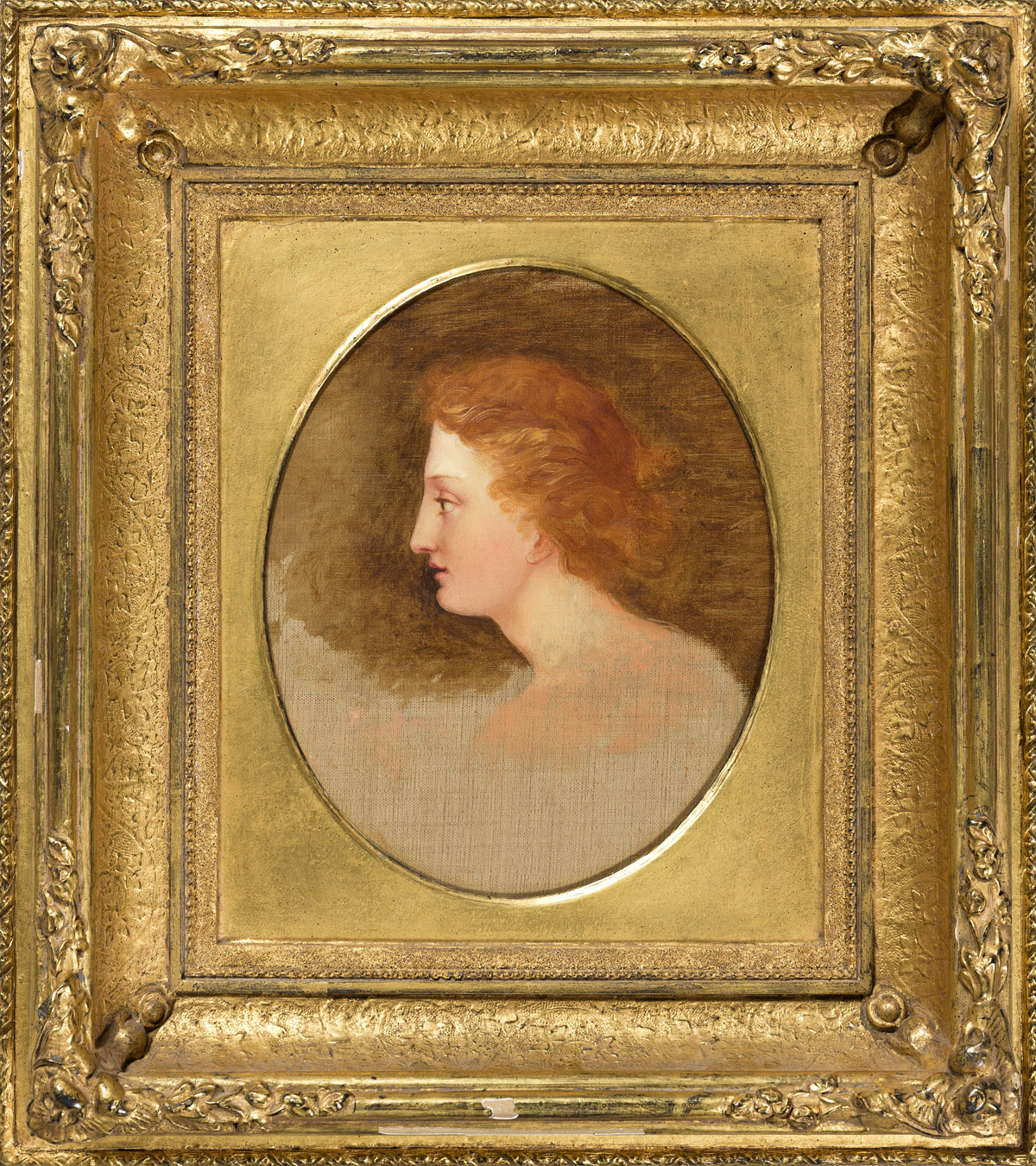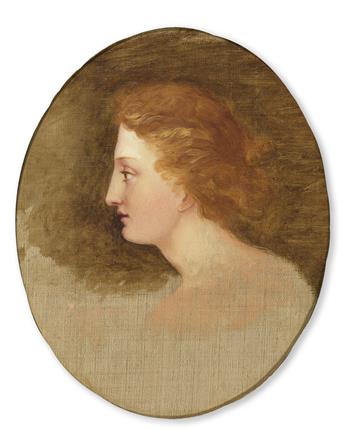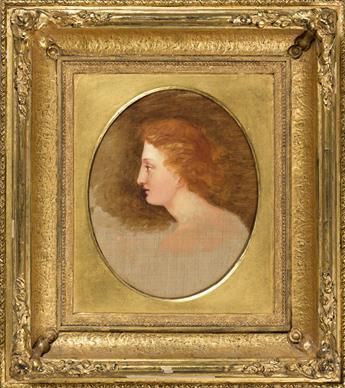Sale 2614 - Lot 3
Unsold
Estimate: $ 30,000 - $ 50,000
THOMAS COLE
Youth.
Oil on canvas, circa 1839-40. 265x210 mm; 10 1/4x8 1/4 inches.
This work is likely a study for the red robed figure on the boat crossing the river in Cole's (1801-1848) oil painting The Voyage of Life: Youth, now in the collection of the National Gallery of Art, Washington, D.C.
Provenance: Private collection, Birmingham, Michigan.
Exhibited: "Side by Side", Munson-Williams-Proctor Arts Institute, Utica, New York, October 5-December 15, 1985, page 11, catalogue number 9.
The Voyage of Life is a series of four paintings created by Cole in 1842, representing an allegory of the four stages of human life. The paintings, Childhood, Youth, Manhood, and Old Age, depict a voyager who travels in a boat on a river through the mid-19th-century American wilderness. In each painting the voyager rides the boat on the River of Life accompanied by a guardian angel. The landscape, each reflecting one of the four seasons of the year, plays a significant role in conveying the story. With each installment the boat's direction of travel is reversed from the previous picture. In childhood, the infant glides from a dark cave into a rich, green landscape. As a youth, the boy takes control of the boat and aims for a shining castle in the sky. In manhood, the adult relies on prayer and religious faith to sustain him through rough waters and a threatening landscape. Finally, the man becomes old, and the angel guides him to heaven across the waters of eternity.
The Voyage of Life was well received by both critics and the public; the United States was experiencing the religious revival sometimes known as the Second Great Awakening. The four paintings were reproduced as engravings by James Smillie (1807–1885) after Cole's death and the engravings widely distributed in time for the Third Great Awakening, further bestowing the series the great prestige and popular acclaim it retains today.
Youth.
Oil on canvas, circa 1839-40. 265x210 mm; 10 1/4x8 1/4 inches.
This work is likely a study for the red robed figure on the boat crossing the river in Cole's (1801-1848) oil painting The Voyage of Life: Youth, now in the collection of the National Gallery of Art, Washington, D.C.
Provenance: Private collection, Birmingham, Michigan.
Exhibited: "Side by Side", Munson-Williams-Proctor Arts Institute, Utica, New York, October 5-December 15, 1985, page 11, catalogue number 9.
The Voyage of Life is a series of four paintings created by Cole in 1842, representing an allegory of the four stages of human life. The paintings, Childhood, Youth, Manhood, and Old Age, depict a voyager who travels in a boat on a river through the mid-19th-century American wilderness. In each painting the voyager rides the boat on the River of Life accompanied by a guardian angel. The landscape, each reflecting one of the four seasons of the year, plays a significant role in conveying the story. With each installment the boat's direction of travel is reversed from the previous picture. In childhood, the infant glides from a dark cave into a rich, green landscape. As a youth, the boy takes control of the boat and aims for a shining castle in the sky. In manhood, the adult relies on prayer and religious faith to sustain him through rough waters and a threatening landscape. Finally, the man becomes old, and the angel guides him to heaven across the waters of eternity.
The Voyage of Life was well received by both critics and the public; the United States was experiencing the religious revival sometimes known as the Second Great Awakening. The four paintings were reproduced as engravings by James Smillie (1807–1885) after Cole's death and the engravings widely distributed in time for the Third Great Awakening, further bestowing the series the great prestige and popular acclaim it retains today.
Exhibition Hours
Exhibition Hours
Aliquam vulputate ornare congue. Vestibulum maximus, libero in placerat faucibus, risus nisl molestie massa, ut maximus metus lectus vel lorem.






